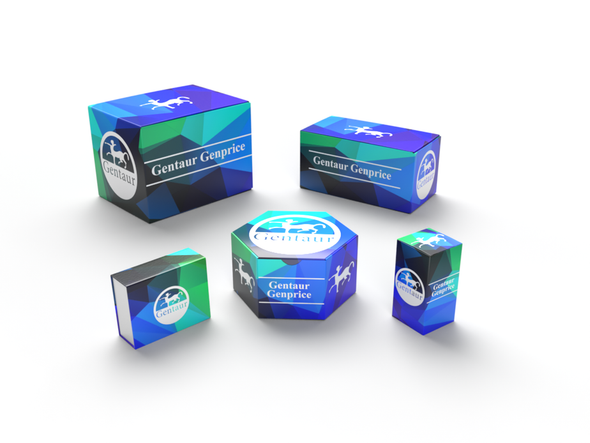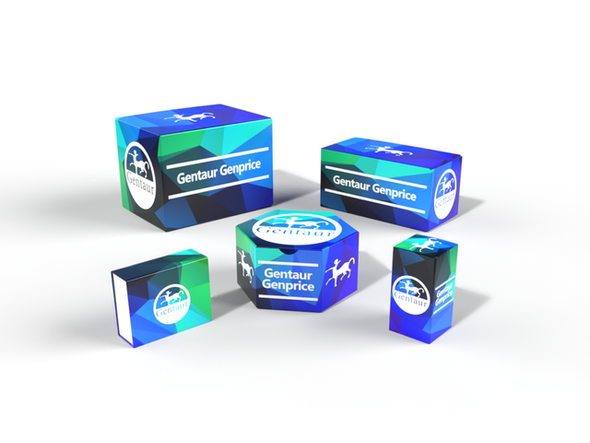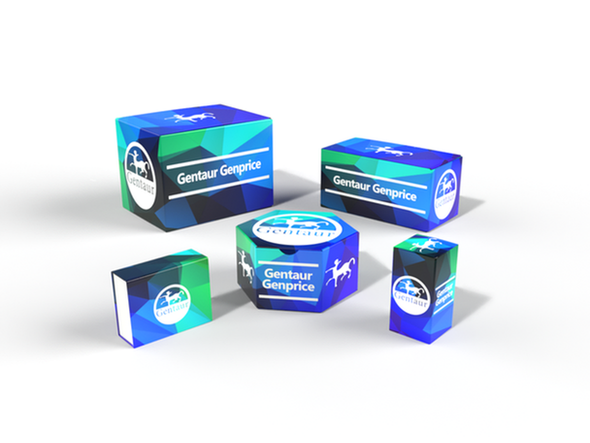Description
ALDH3B1 Antibody | 26-854 | Gentaur UK, US & Europe Distribution
Host: Rabbit
Reactivity: Human
Homology: N/A
Immunogen: Antibody produced in rabbits immunized with a synthetic peptide corresponding a region of human ALDH3B1.
Research Area: Other
Tested Application: E, WB
Application: ALDH3B1 antibody can be used for detection of ALDH3B1 by ELISA at 1:62500. ALDH3B1 antibody can be used for detection of ALDH3B1 by western blot at 1 μg/mL, and HRP conjugated secondary antibody should be diluted 1:50, 000 - 100, 000.
Specificiy: N/A
Positive Control 1: Cat. No. 1211 - HepG2 Cell Lysate
Positive Control 2: N/A
Positive Control 3: N/A
Positive Control 4: N/A
Positive Control 5: N/A
Positive Control 6: N/A
Molecular Weight: 52 kDa
Validation: N/A
Isoform: N/A
Purification: Antibody is purified by peptide affinity chromatography method.
Clonality: Polyclonal
Clone: N/A
Isotype: N/A
Conjugate: Unconjugated
Physical State: Liquid
Buffer: Purified antibody supplied in 1x PBS buffer with 0.09% (w/v) sodium azide and 2% sucrose.
Concentration: batch dependent
Storage Condition: For short periods of storage (days) store at 4˚C. For longer periods of storage, store ALDH3B1 antibody at -20˚C. As with any antibody avoid repeat freeze-thaw cycles.
Alternate Name: ALDH3B1, ALDH4, ALDH7, FLJ26433
User Note: Optimal dilutions for each application to be determined by the researcher.
BACKGROUND: The aldehyde dehydrogenases are a family of isozymes that may play a major role in the detoxification of aldehydes generated by alcohol metabolism and lipid peroxidation. ALDH3B1 is highly expressed in kidney and lung. The aldehyde dehydrogenases are a family of isozymes that may play a major role in the detoxification of aldehydes generated by alcohol metabolism and lipid peroxidation. This particular gene spans about 20 kb of genomic DNA and is composed of 9 coding exons. The gene encodes a single transcript of 2.8 kb which is highly expressed in kidney and lung. The functional significance of this gene as well as the cellular localization of its product are presently unknown. Two transcript variants encoding different isoforms have been found for this gene.








![ALDH3B1 Antibody (Center) [APR06117G] ALDH3B1 Antibody (Center) [APR06117G]](https://cdn11.bigcommerce.com/s-1rdwiq712m/images/stencil/590x590/products/59571/59875/gentaur-genprice__26005.1661610467__29809.1661628092__75433.1661676199__77988.1661684280__64362.1661692443__36392.1661856385.png?c=1)

